Palabras clave:
enfermedades emergentes y reemergentes, salud ecosistémica, zoonosis.Resumen
La Medicina de la Conservación, la Ecología de las Enfermedades y la Medicina Veterinaria se entrelazan en procesos investigativos y brindan soluciones a las problemáticas que afectan la salud tanto humana como animal. Sobre este tema, se conoce que las enfermedades infecciosas afectan el bienestar de humanos y de animales; en este sentido, se ha podido conocer que el 75 % de las enfermedades zoonóticas tienen origen en animales silvestres y que el 60 % de las enfermedades infecciosas presentes en humanos, son zoonosis. Lo anterior, pone en riesgo a las poblaciones humanas por causa de las enfermedades emergentes y reemergentes; asimismo afecta las producciones pecuarias al disminuir la calidad y la cantidad de los productos y logra perturbar las poblaciones de fauna silvestre al diezmar las especies, que en ocasiones pueden llegar a su extinción.
Descargas
Citas
AGUIRRE, A.; OSTFELD, S.; TARBOR, G.; HOUSE, C. & PEARL, M. 2002. Conservation Medicine. Ecological Health in Practice. Oxford University Press, New York. 407 pp.
ARRIVILLAGA, J. & CARABALLO, V. 2009. Medicina de la Conservación. Revista Biomédica 20: 55-67.
CARRADA, T. 2001. De las enfermedades infecciosas. Ciencias (64): 62-73. Disponible en http://www.ejournal.unam.mx/cns/no64/CNS06413.pdf. Accesado en 23/06/14.
CHEN H.L., SMITH, G.J., ZHANG, S.Y., QIN, K., WANG, J., LI, K.S., WEBSTER, R.G., PEIRIS, J.S. & GUAN, Y. 2005. Avian flu: H5N1 virus outbreak in migratory waterfowl. Nature 436: 191-192.
CHEN, H.L., LI, Y.B., LI, Z.J., SHI, J.Z., SHINI, K., DENG, G.H., QI, Q.L., TIAN, G.B., FAN, S.F., ZHAO, Y.X. & KAWAOKA Y. 2006. Properties and dissemination of H5N1 viruses isolated during an influenza outbreak in migratory waterfowl in western China. Journal of Virology 80: 5976-5983.
CROCKET, M. 1998. Conservation Biology of the Genus Alouatta. International Journal of Primatology (19): 549-578.
DEEM, S. L., SPELMAN, L. H., YATES, R. A & MONTALI, R. J. 2000. Canine distemper in terrestrial carnivores: a review. Journal Zoology Wildlife Medicine 31: 441-451.
DOBSON, A. & MAY, R. 1986. Conservation Biology. The Science of Scarcity and Biodiversity. Ed, M. E. Soulé. Sinauer Association, Inc. Publisher.
GUISERIX, M., BAHI-JABER, N., FOUCHET, D., SAUVAGE, F., & PONTIER, D. 2007. The canine distemper epidemic in Serengeti: are lions victims of a new highly virulent canine distemper virus strain, or is pathogen circulation stochasticity to blame? Journal of the Royal Society Interface 4(7): 1127-1134.
HOLZMANN, I., AGOSTINI, I., ARETA, J.I., FERREYRA, H-. BELDOMENICO, P. & DI BITETTI, M.S. 2010. Impact of yellow fever outbreak on two howler monkey species (Alouatta guariba clamitans and A. caraya) in Misiones, Argentina. American Journal of Primatology 72(6): 475-480.
LIU, J., XIAHO, H., LEI, F., ZHU, Q., QIN, K., ZHANG, X.W., ZHAO, D., WANG, G., FENG, Y., MA, J., LIU, W., WANG, J. & GAO, G.F. 2005. Highly pathogenic H5N1 influenza virus infection in migratory birds. Science 309(5738): 1206.
NASSAR-MONTOYA, F. & PEREIRABENGOA V. 2013. El estudio de la salud de la fauna silvestre. Teoría y práctica transdisciplinaria para la conservación con ejemplos para Latinoamérica. COMVEZCOL. Bogotá. 278pp.
OMS (Organización Mundial de la Salud). 2006. Constitución de la Organización Mundial de la Salud. Documento de la 51° Asamblea Mundial de la Salud. Disponible en http://www.who.int/governance/eb/ho_constitution_sp.pdf Accesado en 20/05/14.
THACKER, S. B. & BERKELMAN, R. L. 1988. Public health surveillance in the United States. Epidemiol.Rev. 10: 164- 190.
RALLS, K & BALLOU, J, 1992, Managing Genetic Diversity in Captive Breeding and Reintroduction Programs. Trans. 57th N.A. Wildlife & Natural Resources Conference 236-281.
WEINHOLD B. 2003. Conservation medicine: Combining the best of all worlds. Environmental Health Perspectives. 111(10): 525-529.
WOBESER, G. 2002. New and emerging diseases—the wildlife interface. Can. Vet. J. 43: 798.





